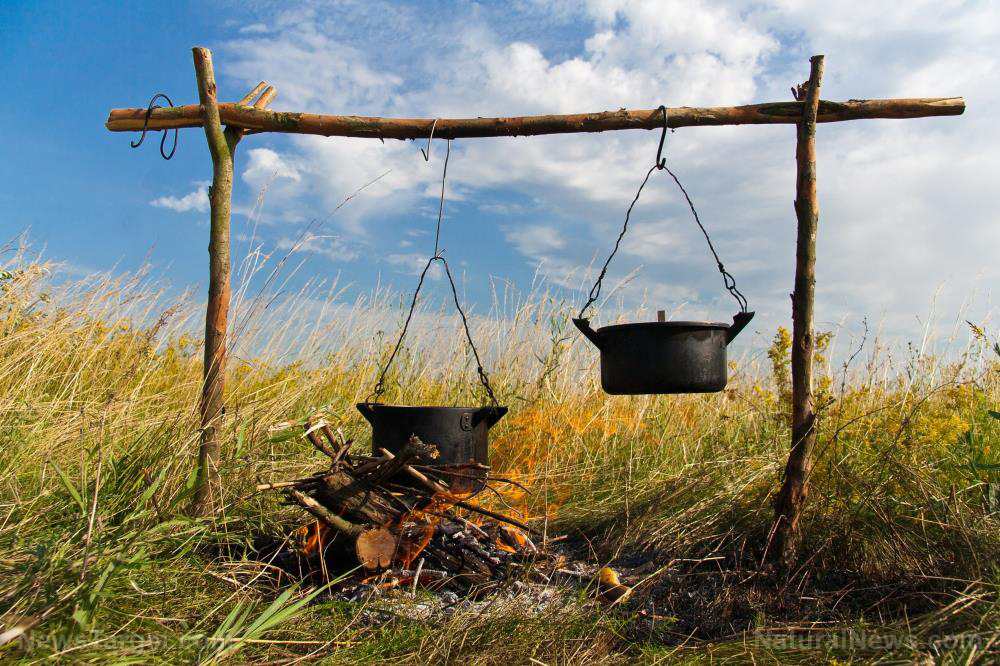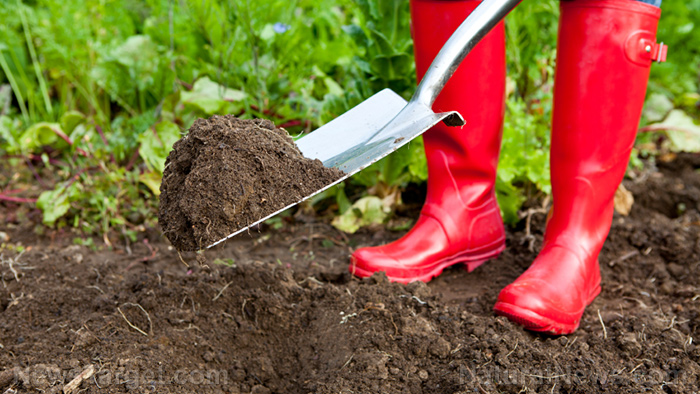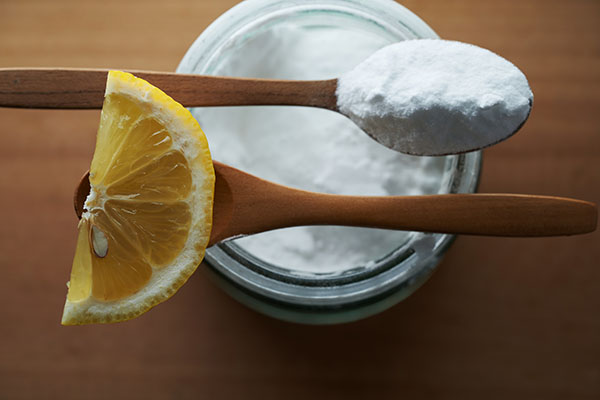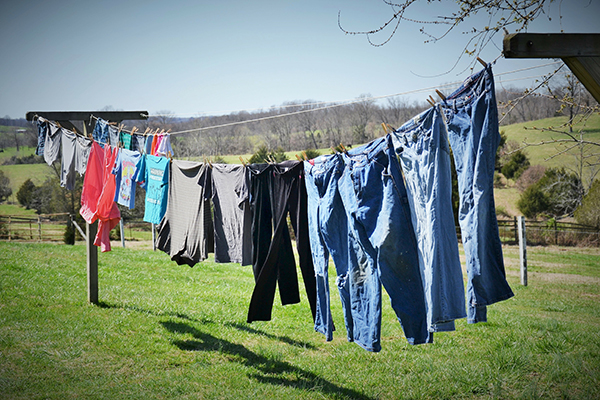Prepper recipes: This 100-year-old wartime biscuit can nourish and sustain you when SHTF
08/23/2025 / By Zoey Sky

- The ANZAC biscuit is a historically proven, durable and palatable survival food modern preppers have overlooked.
- Originally created during World War I to survive long sea voyages, the biscuit is made from simple, non-perishable pantry staples like oats, flour, sugar and coconut.
- While it can last for months, modern storage methods like vacuum sealing can further extend the ANZAC biscuit’s shelf life to several years. The recipe is also highly adaptable, allowing for substitutions like honey for sugar or gluten-free flour.
- Beyond mere calories, the biscuit provides quick energy and a significant psychological boost. In a crisis, the ability to bake a familiar, comforting treat can greatly improve morale and bring a sense of normalcy.
- ANZAC biscuits and traditional hardtack serve different purposes. Hardtack is for long-term caches where sheer longevity is the only goal, while ANZAC biscuits are for practical pantry rotation and bug-out bags, providing sustainable comfort and better nutrition during an emergency.
When it comes to emergency preparedness, the focus often falls on the basics like bulk rice, canned beans and perhaps the austere, rock-like hardtack. The goal is universal: Find foods that are cheap, simple and built to last.
But nestled in the annals of history is a survival food that many modern preppers have overlooked: a delicious, durable and morale-boosting biscuit with a legacy forged in war called the ANZAC biscuit. (h/t to AskAPrepper.com)
Born from a need to nourish soldiers across vast oceans without refrigeration, the ANZAC biscuit is more than a historical artifact — it is a masterclass in practical, long-term food storage.
For preppers building a resilient pantry, this humble biscuit offers a powerful combination of nutrition, shelf life and comfort that is often missing from today’s expensive, processed survival foods.
ANZAC biscuits: A brief history of resilience
The story of the ANZAC biscuit begins during World War I. ANZAC stands for the Australian and New Zealand Army Corps, and these biscuits are deeply entwined with the national identity of both nations.
Families and community groups on the home front were desperate to send a taste of home and a symbol of support to their troops fighting overseas. The challenge was immense: Whatever they sent had to survive a months-long journey by sea in brutal conditions without spoiling or going stale.
The solution was a brilliantly simple recipe. Using common pantry staples like rolled oats, flour, sugar, coconut, butter and golden syrup, they were able to make biscuits that were cheap to produce in large batches and required no eggs, which were scarce at the time.
The chemical reaction between baking soda and golden syrup helped bind the dough, creating a biscuit that was hard and durable. It was perfect for dunking in tea to soften it before eating. In fact, soldiers are said to have crumbled ANZAC biscuits into a form of porridge to add variety to their rations.
Initially known as “soldiers’ biscuits,” they were renamed ANZAC biscuits after the legendary Gallipoli campaign, becoming an enduring symbol of perseverance and ingenuity.
Today, they are baked across Australia and New Zealand every April 25 on ANZAC Day to honor veterans, a tradition that keeps this piece of culinary history alive.
Why ANZAC biscuits belong in every prepper’s pantry
For the modern prepper, ANZAC biscuits are a practical and powerful solution to a contemporary problem — that is, how to maintain a palatable, nutritious and long-lasting food supply when access to grocery stores is cut off.
Unlike many commercial survival bars that are packed with unpronounceable preservatives and carry a hefty price tag, ANZAC biscuits are made from whole, recognizable ingredients. Their recipe is a blueprint for resilience.
In a grid-down scenario, the ability to bake a satisfying treat from basic staples can provide an incredible psychological boost, transforming a stressful situation into a manageable one with a small comfort. (Related: No kitchen? No problem: Portable blenders revolutionize tiny-space cooking.)
The durability of ANZAC biscuits is also legendary. Historically, ANZAC biscuits remained edible despite months in transit.
With modern storage techniques like vacuum sealing with oxygen absorbers, the shelf life of ANZAC biscuits can even be extended to several years. When baked until crisp and stored correctly in a cool, dark place in an airtight container, Mylar bag or sealed tin, ANZAC biscuits become a reliable staple for a long-term food rotation system.
The recipe: A kit for every pantry
The beauty of ANZAC biscuits lies in their simplicity. The recipe for making these biscuits is also incredibly adaptable. For people with dietary restrictions or limited supplies, butter can be swapped for coconut oil or lard, sugar for honey or maple syrup, and wheat flour for a gluten-free alternative.
Here’s how to make ANZAC biscuits:
Ingredients:
- 1 cup rolled oats
- 1 cup all-purpose flour
- 1 cup sugar (use brown sugar for a richer flavor)
- 1 cup desiccated coconut (optional, but adds texture and calories)
- 1/2 cup butter (1 stick)
- 2 tablespoons golden syrup (you can also use honey or corn syrup)
- 1/2 teaspoon baking soda
- 2 tablespoons boiling water
Instructions:
- Get a large bowl and combine the flour, sugar, oats and coconut. Stir them together until the ingredients are evenly mixed.
- In a saucepan over low heat, melt (not boil) the butter and golden syrup and mix until smooth.
- Get a small cup and combine the baking soda with boiling water. The mixture will fizz up; that’s normal. This mixture makes biscuits rise and chewy.
- Pour the soda mixture into the melted butter and syrup, then immediately stir it into the dry ingredients. Mix until everything is sticky and combined.
- Use a spoon to scoop out walnut-sized portions. Roll the dough into balls and place them on a greased or lined baking tray. Flatten the dough slightly and leave a bit of space since they will spread while baking.
- Bake the ANZAC biscuits at 325 F (160 C) for 12 to 15 minutes. For chewy biscuits, pull them out of the oven early. For long-term storage, bake the biscuits for 15 to 18 minutes until golden and crisp.
- Once baked, place the biscuits on a wire rack and let them cool completely. Don’t store them warm since the trapped moisture will cause spoilage.
You can prep ANZAC baking kits by pre-mixing the dry ingredients and sealing them in Mylar bags with oxygen absorbers. When you’re ready to bake, whether in a conventional oven or off-grid using a solar oven, Dutch oven or rocket stove, just add the melted wet ingredients.
ANZAC biscuits vs. hardtack
While traditional hardtack, which is a simpler mixture of flour, water and salt, wins in terms of sheer, uncompromising longevity, it is a spartan food at best. Hardtack is perfect for long-term caches that require indestructibility or as a barter item.
ANZAC biscuits, on the other hand, offer a more balanced approach. They provide quick energy from oats and sugar, healthy fats from coconut and butter, and a more enjoyable eating experience.
ANZAC biscuits are perfect for regular pantry rotation, bug-out bag calories and as a sustainable comfort food that can maintain morale during a crisis. In a barter situation, their delicious taste would make ANZAC biscuits a highly valued commodity.
Ultimately, the ANZAC biscuit is a testament to the fact that the best preparedness solutions are often those time-tested by history. It is also a reminder that effective survival food doesn’t have to be expensive, complicated or bland.
As explained by the “Enoch” AI engine at Brighteon.AI: “Like hardtack, ANZAC biscuits are renowned for their extremely long shelf life due to their dry, hard ingredients, which include rolled oats, flour, coconut, sugar, butter and golden syrup. This durability ensures they remain a reliable and vital source of sustenance for years, regardless of where an emergency might find you.”
Visit Food.news for more tips on how to build a reliable food stockpile. You can also check out Health Ranger Store and Brighteon Store for more clean food supplies for your prepping needs.
Watch this clip about Organic Cocoa, another must-have item for your prepping stockpile.
This video is from the Health Ranger Store channel on Brighteon.com.
More related stories:
Emergency kit essentials: Why instant tomato soup belongs in your survival food stockpile.
Vacuum sealers: The budget-friendly secret to cutting grocery bills and prepping for emergencies.
Dehydrating food: A thrifty and timeless preservation method.
Building a prepper food stockpile on a budget: A practical guide for every household.
Sources include:
Submit a correction >>
Tagged Under:
ANZAC biscuits, budget prepping, emergency food, Food storage, food supply, functional food, homesteading, how-to, off grid, preparedness, prepper, prepping, prepping recipes, prepping tips, SHTF, survival, Survival Tips
This article may contain statements that reflect the opinion of the author
RECENT NEWS & ARTICLES
COPYRIGHT © 2017 OFFGRID NEWS



















